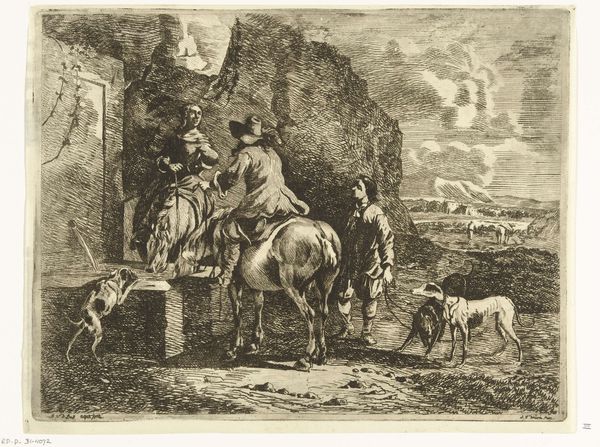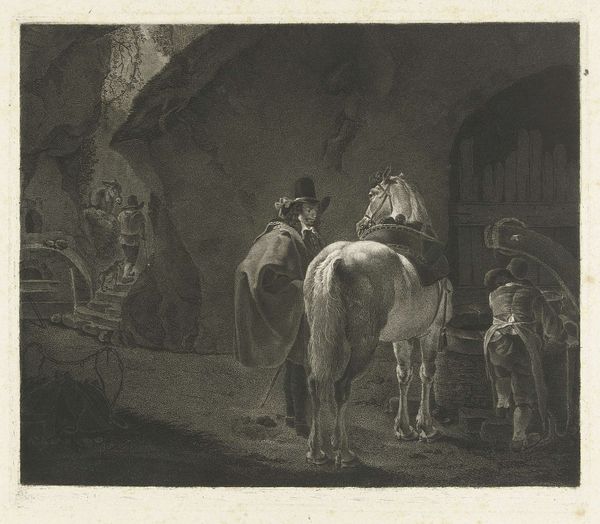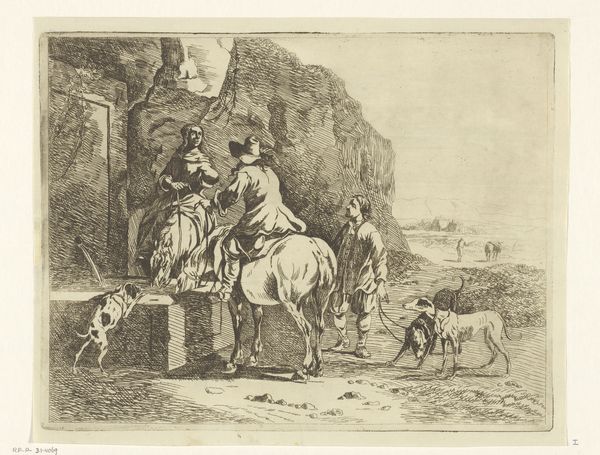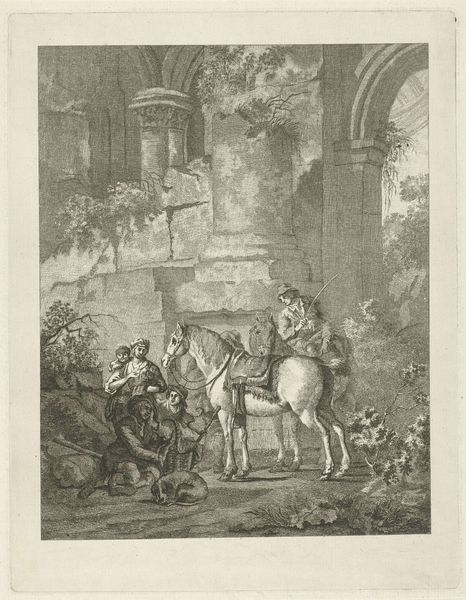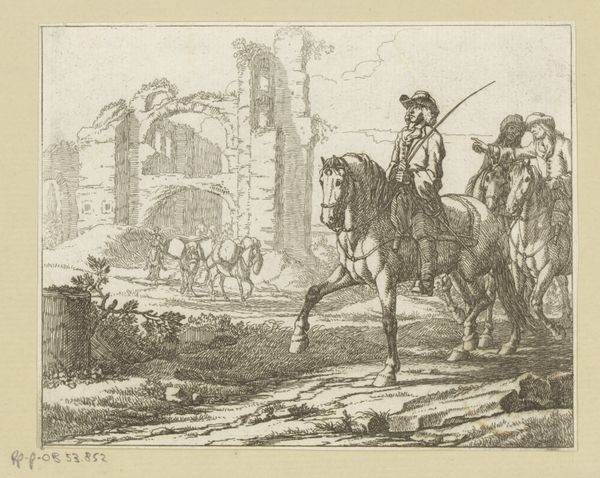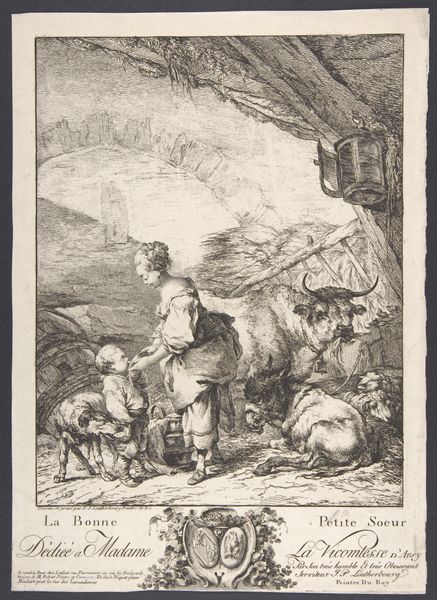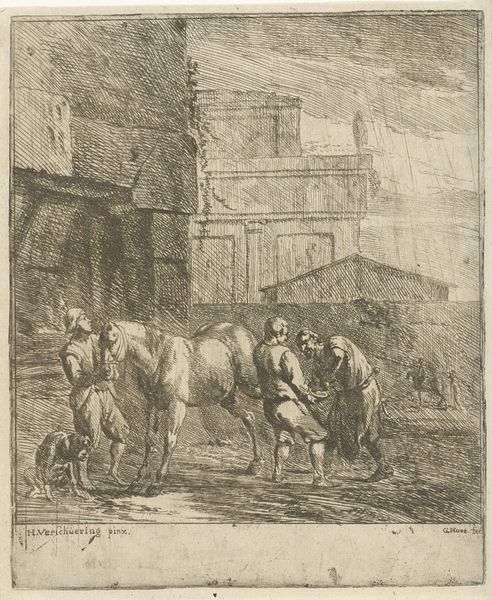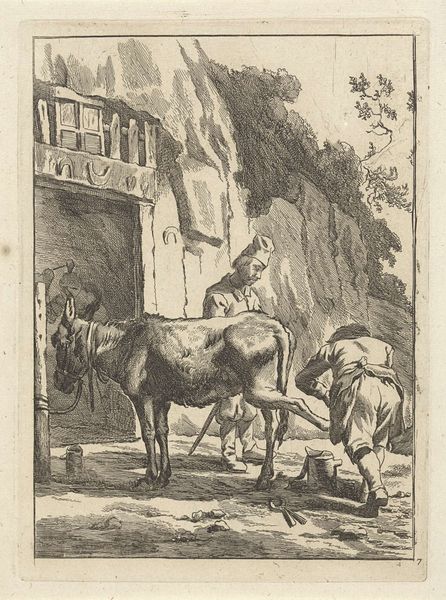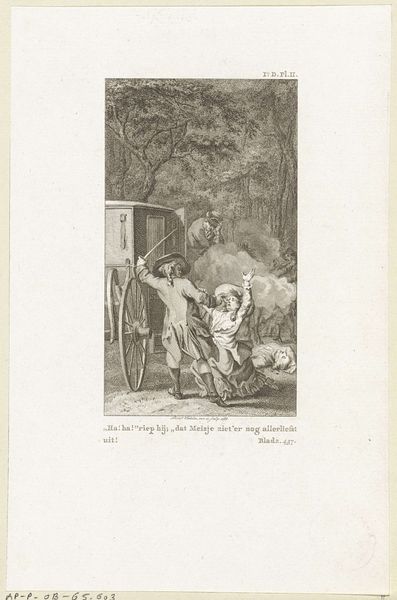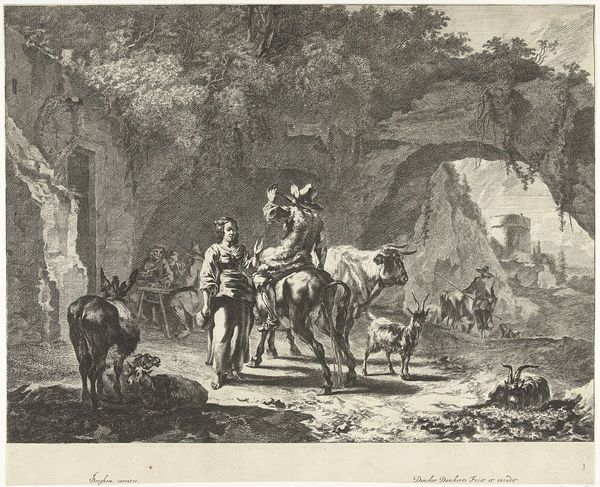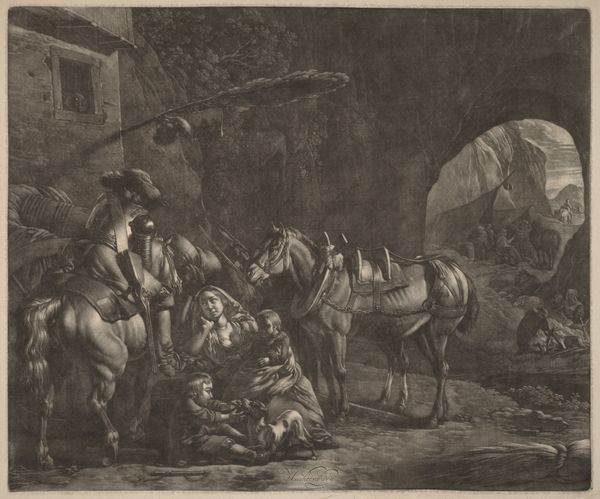
print, etching
#
portrait
#
animal
# print
#
etching
#
pencil sketch
#
dog
#
landscape
#
horse
#
genre-painting
Dimensions: height 361 mm, width 270 mm
Copyright: Rijks Museum: Open Domain
Editor: Here we have "Boer met paard bij een grotwoning," dating somewhere between 1760 and 1834, an etching by Elisabeth Marie Simons. It strikes me as a very detailed and somewhat idealized depiction of rural life. What do you see in this piece? Curator: I see a study in contrasts and enduring relationships. Consider how the rough, natural cave dwelling is set against the figures within—the farmer on horseback, the boy with his wheelbarrow, even the dog. These aren’t just figures in a landscape; they're symbolic of humanity’s constant negotiation with nature. Look at the figures outside the cave compared to those taking shelter—how do you think that contributes to the visual narrative? Editor: It makes the interior scene feel safer, more contained, while those outside are braving the elements. Like a contrast between domesticity and the wild? Curator: Precisely! And consider the horse, dog, and human figures—they represent a kind of pact. In many cultures, the horse symbolizes strength and loyalty, the dog guardianship, forming a tableau representing the building blocks of a community and hinting at mutual support. Also, have you considered the written text beneath the image? It certainly carries a cultural significance. Editor: Yes, the poem speaks of contentment in labor, and the implication seems to be that true wisdom is found not in palaces but amidst simple folk and nature’s fury. Curator: It certainly adds another layer of symbolic weight, embedding the visual in a larger tradition of pastoral themes but with a realist touch. Editor: That's fascinating – I hadn't considered the broader cultural implications of the human-animal bond so central to the composition. Curator: Seeing the art through the symbols really illuminates cultural memory and provides a more intimate lens.
Comments
No comments
Be the first to comment and join the conversation on the ultimate creative platform.
